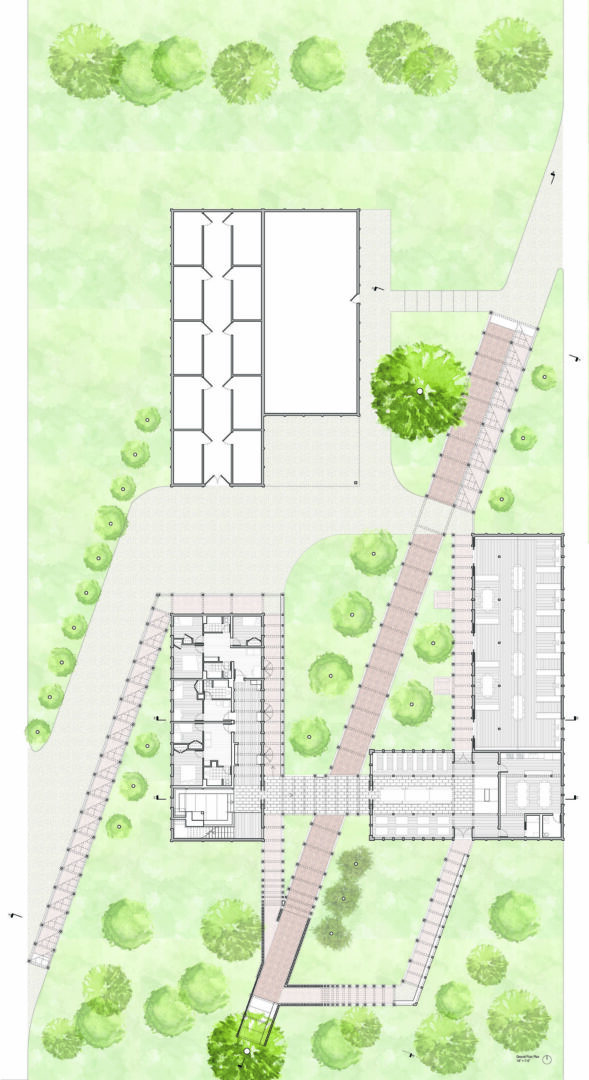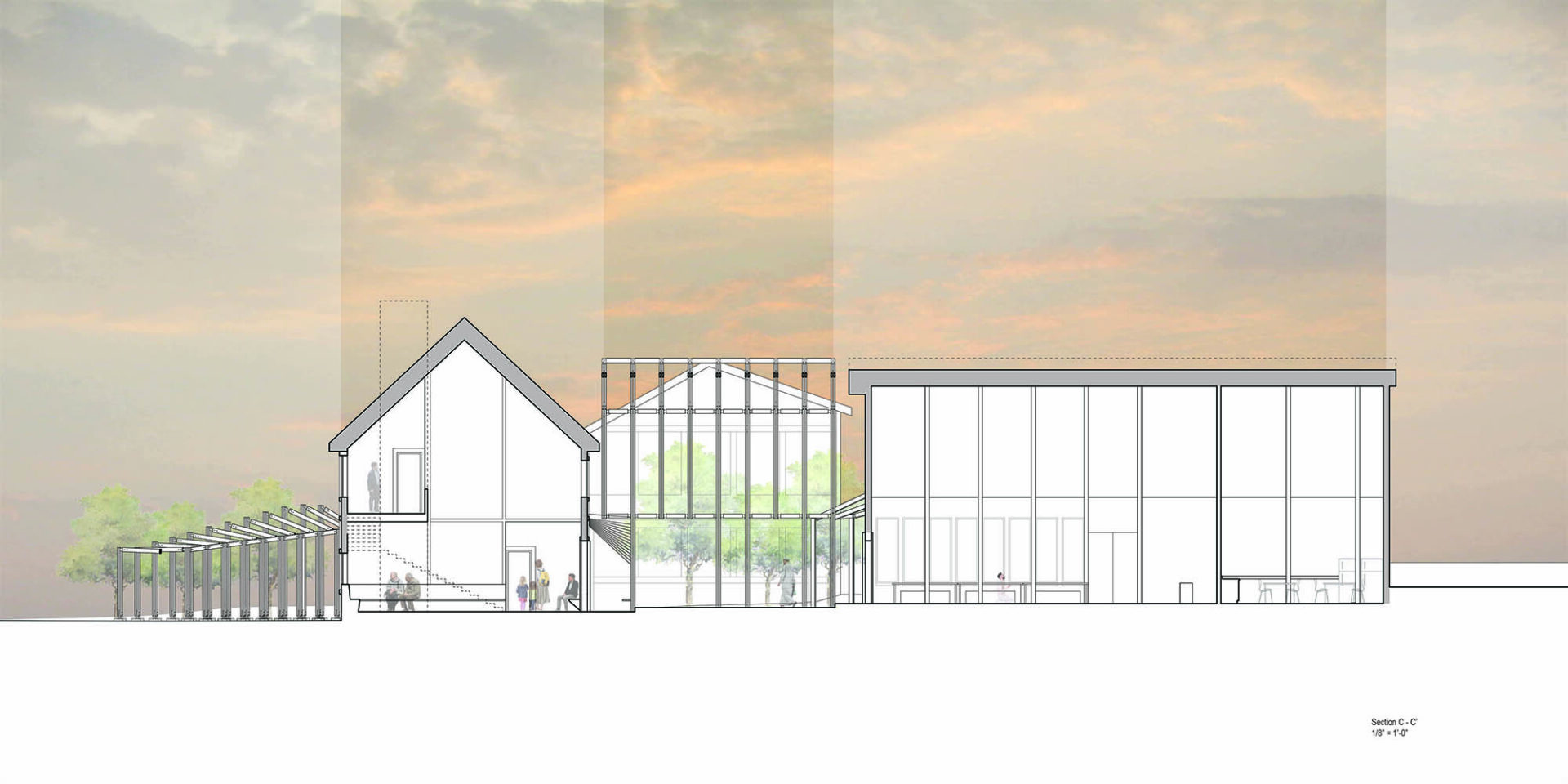ARCH_500-600 Options Studio: ‘Ghost Sanctuary’
Jonathan Stitelman, Visiting Assistant Professor
This studio was positioned between Giorgio Agamben’s Homo Sacer and the exhibition Ai Weiwei: Bare Life, on view from September 28, 2019 through January 5, 2020 at the Mildred Lane Kemper Art Museum. Students explored the notion of sanctuary—both abstractly and from a personal position—culminating in the design of a sanctuary building. The design process originated in representational experiments seeking to capture traces of the places of comfort to which we can no longer return. This exercise was generative of form and effect in the final design.
In his seminal text, Homo Sacer: Sovereign Power and Bare Life (1995, Stanford University Press), Italian political philosopher Giorgio Agamben frames two poles: sovereignty and bare life. He posits that sovereignty presupposes itself as a state of nature and constitutes power through a blurred matrix of violence and justice, asserting rules that ultimately affect inclusion and membership of citizens. Bare life, on the other hand, is an individual’s existence outside the protection of sovereign power. From a spatial perspective, one may be included in a sovereign domain without being a member, a position Agamben describes as “excrescent,” to be present without representation. This status, shared by individuals seeking sanctuary in unwelcoming nations around the world, unifies people who have been forced from home out of fear of bodily harm or persecution. Excrescence and the pursuit of sanctuary are timeless issues central to contemporary discourses around identity, protection, and social justice. While architects have been historically interested in engaging questions of belonging through their work, one persistent challenge has been identifying meaningful sites for design. Agamben posits that the extreme condition within the duality is the concentration camp, where sovereign violence and justice exist in a state of indistinction, meted out upon a dis-included population betrayed by their own “biopolitical” identity.
In this studio, students considered the notion of sanctuary as counterpoint to the camp. The concept of sanctuary guided students’ formal and graphic exploration, represented through a suite of analog and digital artifacts that blurred the formal and non-formal elements of imagery. Through these artifacts, the threshold between memory and representation were probed. This entailed defining personal places of respite and acknowledging the underlying bitter truth that one can never go back. The final project, the design of a sanctuary, drew from the geometric, atmospheric, formal, and graphic elements of students’ own lost respites.
This work was also situated relative to the exhibition Ai Weiwei: Bare Life at the Mildred Lane Kemper Museum of Art. Weiwei’s work—part found object, part political commentary—probes at the precariousness of cultural artifacts and authority through the creation of enigmas, which express two incompatible wholes. To enhance their research, students were invited take part in public discussions related to the exhibition.
The Ghost Sanctuary is a place for retaining lost memories of comfort, intrepidly interlaced in an unwelcoming territory.

Larissa Sattler

Larissa Sattler

Larissa Sattler

Larissa Sattler

Larissa Sattler

Larissa Sattler

Siyu Bai

Siyu Bai

Siyu Bai

Siyu Bai

Siyu Bai

Siyu Bai